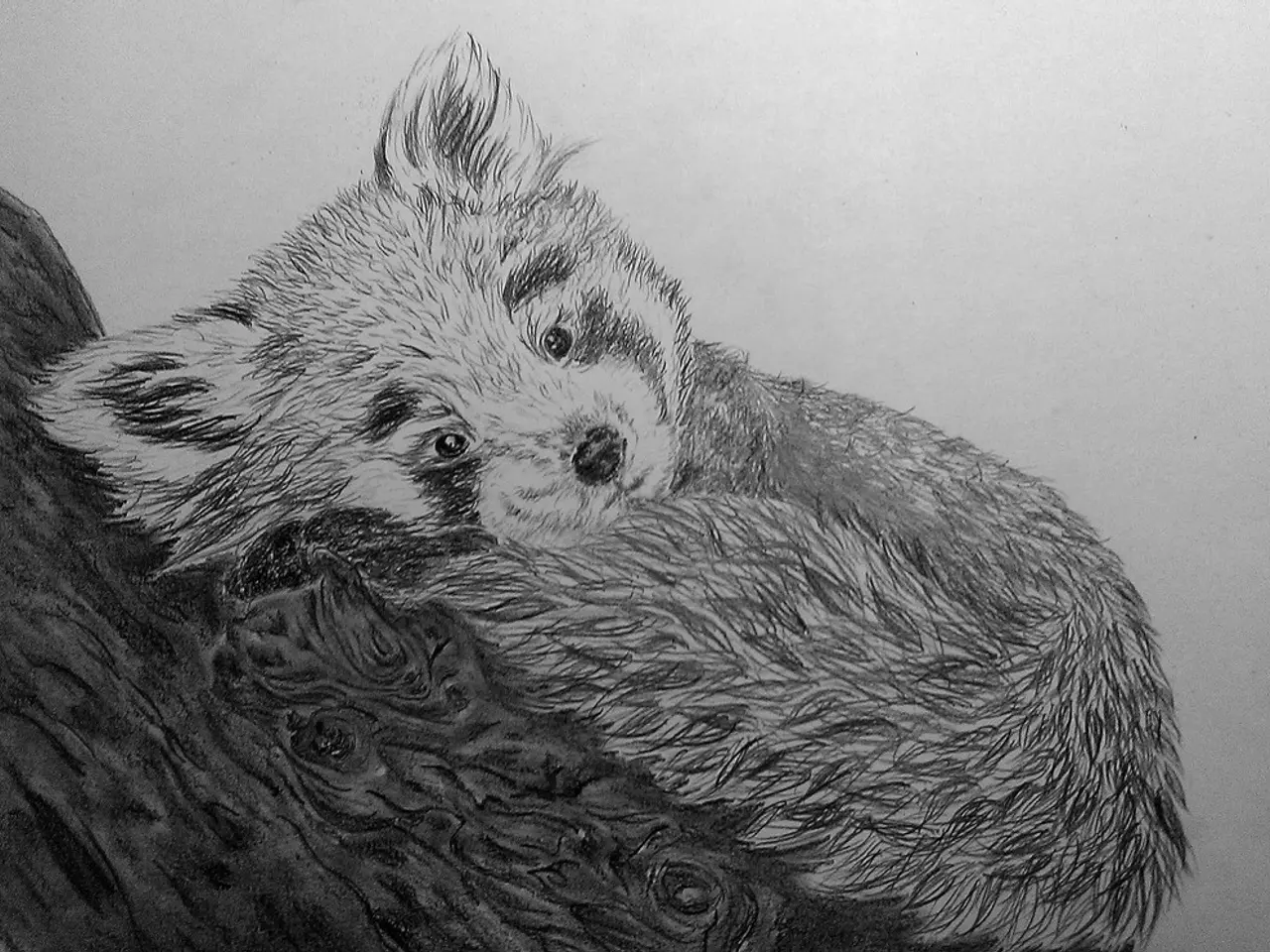Unveiling the Enchantment of White Charcoal Sketching Artistry
White charcoal pencils are a popular choice among artists for creating dynamic contrasts and luminous highlights in their artwork. These pencils, composed of a compressed mixture of finely ground charcoal and a binding agent, are ideal for adding bright accents to darker surfaces, making them perfect for highlighting areas or creating strong focal points in drawings.
When it comes to shading in white charcoal drawing, the focus is on the relationship between light and shadow. Artists consider the light source and its interaction with forms in the drawing, ensuring that the highlights are placed effectively to create a sense of depth and realism.
High-quality white charcoal pencils are essential for maintaining the brightness of the pigment and providing a smooth application. Layering colored pencils and white charcoal can create an exciting contrast that enhances the luminosity of the colors.
Beginning white charcoal drawing involves practicing simple shapes and forms, using light pressure to apply the charcoal in thin layers. Landscapes and nature scenes are another popular subject for white charcoal pencil drawings, allowing for the creation of luminous skies, glowing water surfaces, and deep shadows in foliage. Highlights on the eyes and hair in portraits can create striking focal points, bringing the portrait to life.
Blending is a crucial technique in white charcoal drawing, as it softens the edges and creates gradients that enhance the illusion of depth. White charcoal pencil drawing can create texture through techniques such as stippling, cross-hatching, and scumbling. Ink or graphite can be used in conjunction with white charcoal to create a unique aesthetic that distinguishes artwork from traditional drawing techniques.
Recommended materials for white charcoal pencil drawing include white charcoal pencils (preferably soft enough to apply smoothly but hard enough to hold a point for detail), black charcoal types such as vine (soft, light marks) and compressed charcoal (dark, intense black), blending tools like stumps or tortillons, kneaded erasers, and medium to light textured paper.
Effective techniques when working with white charcoal pencil include adding highlights after laying down shadows and midtones with black charcoal, often as a final layer to reinforce light spots, reflected light, or surface shine. Preserving highlight areas by identifying and protecting them early in the drawing is also important, as it allows the white charcoal to be used to amplify them rather than trying to add highlights where none were planned. Working in layers, starting with broad value patterns in vine charcoal, followed by detailed forms with compressed charcoal, then applying white charcoal last to highlight details and textures, is another recommended approach. Employing cross-hatching and varied pressure with the white charcoal pencil can create different textural effects like skin sheen, fabric highlights, or rough textures.
Additional effects can be achieved by combining white charcoal pencil with other media like acrylic paint (e.g., titanium white) for very bright, opaque highlights pushing the drawing closer to mixed media, or blending charcoal shadows with white charcoal highlights for dramatic light-dark contrasts, adding depth and a three-dimensional feel.
In summary, the best approach is to use white charcoal pencil as a highlight and accent tool in contrast with darker charcoals, carefully plan and preserve highlight areas, work in layered values, and choose medium-to-smooth textured paper suited for detailed work. Clean tools and blending with stumps and erasers also help produce polished, visually striking drawings. White charcoal can be layered over other mediums like colored pencils, pastels, or watercolors to achieve stunning results. Capturing the interplay of light and shadow through the use of white charcoal can convey the beauty and tranquility of nature. Heavier, textured paper is suitable for white charcoal pencil drawing as it can hold more material and allow for greater depth and softer blending. White charcoal pencils are versatile and can easily blend with other media, making them a valuable addition to any artist's toolkit.
Artists can incorporate white charcoal pencil drawing into their home-and-garden or lifestyle decor by framing landscapes that feature luminous skies and water surfaces, enhancing the ambiance of their living spaces. Incorporating the unique aesthetic of white charcoal into watercolor drawings can create an interesting contrast, blending the techniques of traditional drawing and watercolor lifestyle.





